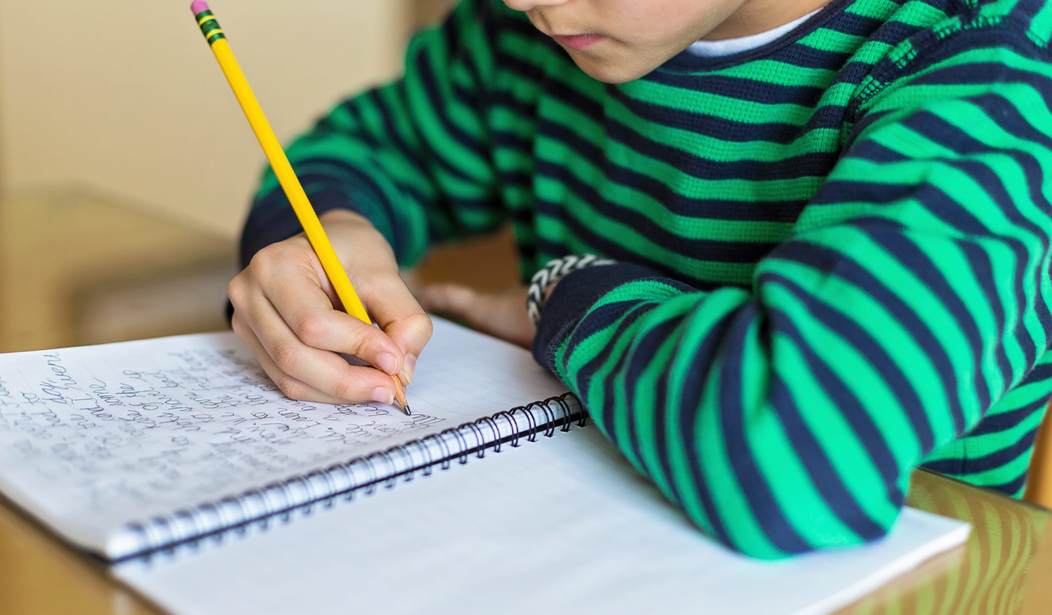When we were kids, cursive was taught in every school. I will never forget Mrs. Barry, my second-grade teacher, who was hardcore about penmanship. She would circle the room slowly, bouncing her pointer stick in hand, looming over kids’ shoulders, inspecting their work with a fine-tooth comb. If she felt that it was messy or that our letter “G” didn’t have an eloquent enough hook to it, she would make us start over. We hated it as kids, but looking back, it taught us discipline and to take pride in our work—virtues that I carry with me to this day.
In today’s schools, the alluring smell of antiquated hardbacks in a quiet library is being replaced by smart boards and laptops. Most of my older children’s assignments are typed, not handwritten, but they know cursive and I have stressed using it in my home so they won’t lose the art. But how will the younger generation read priceless documents, such as our Constitution and our Bill of Rights, if they don’t learn cursive?
Thanks to Common Core “standards,” schools are no longer required to teach cursive in schools. This is part of the dumbing down of our children, systematically removing anything that may require work or has anything to do with our rich history. Excellence and healthy competition have been replaced by participation trophies and safe spaces.
According to Dr. William Klemm, cursive is particularly important in cognitive development:
Scientists are discovering that learning cursive is an important tool for cognitive development, particularly in training the brain to learn “functional specialization,” that is, the capacity for optimal efficiency. In the case of learning cursive writing, the brain develops functional specialization that integrates both sensation, movement control, and thinking. Brain imaging studies reveal that multiple areas of the brain become co-activated during the learning of cursive writing of pseudo-letters, as opposed to typing or just visual practice.
Many schools dismiss cursive as an “ancient skill” rather than a valuable tool to cultivate young minds and turn them into exceptional students, enhancing both reading and writing skills. I was over-the-moon excited when I first learned that my children’s school district is still teaching cursive. My son’s kindergarten teacher is a huge proponent of the skill and we share the same sentiments about the value it brings to the table.
Find out whether your schools teaches cursive and if they don’t, get in front of the school board and make that change. Your children are well worth the time it would take to help them flourish in the future, setting them up for a successful life.









Join the conversation as a VIP Member